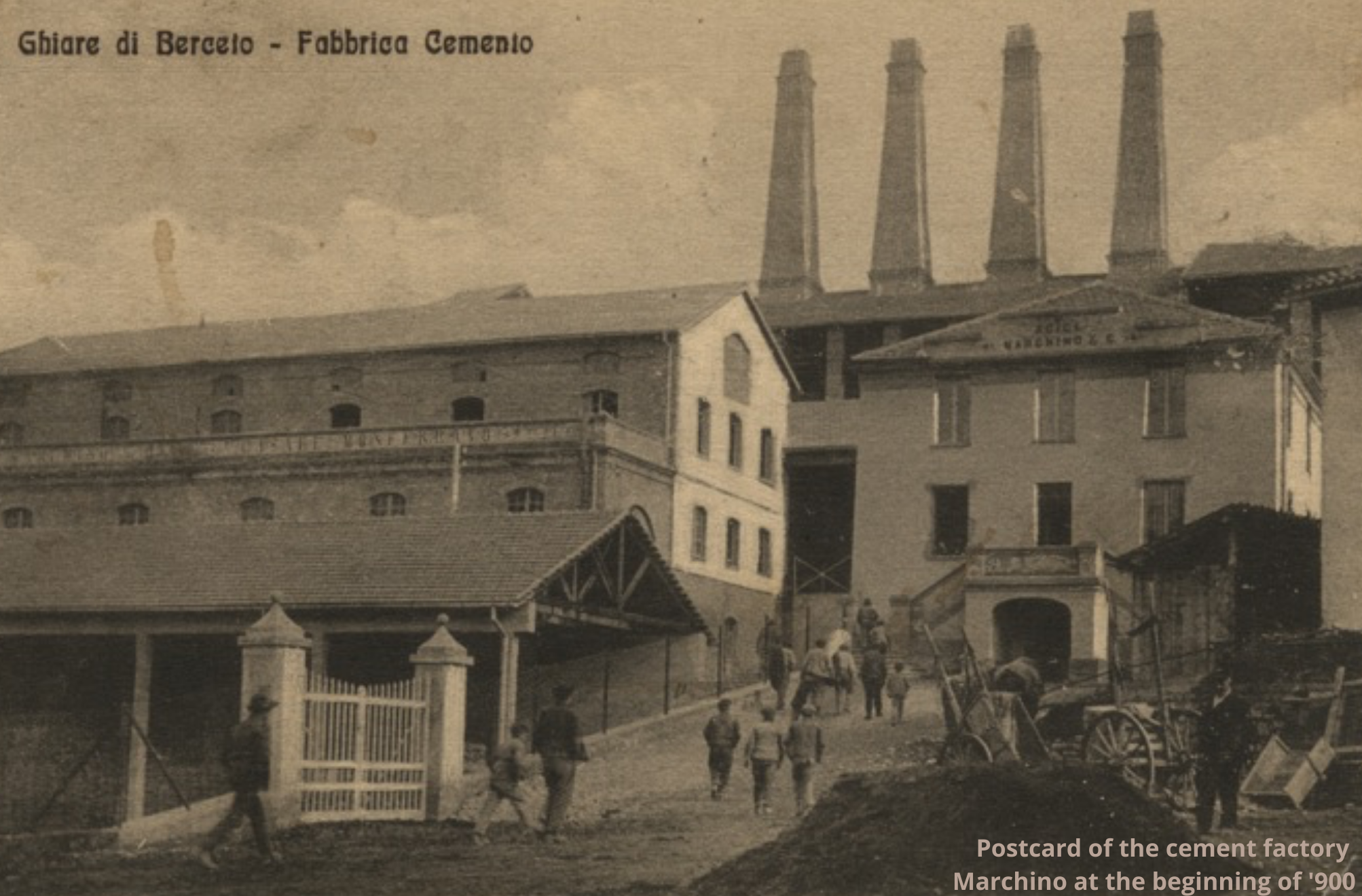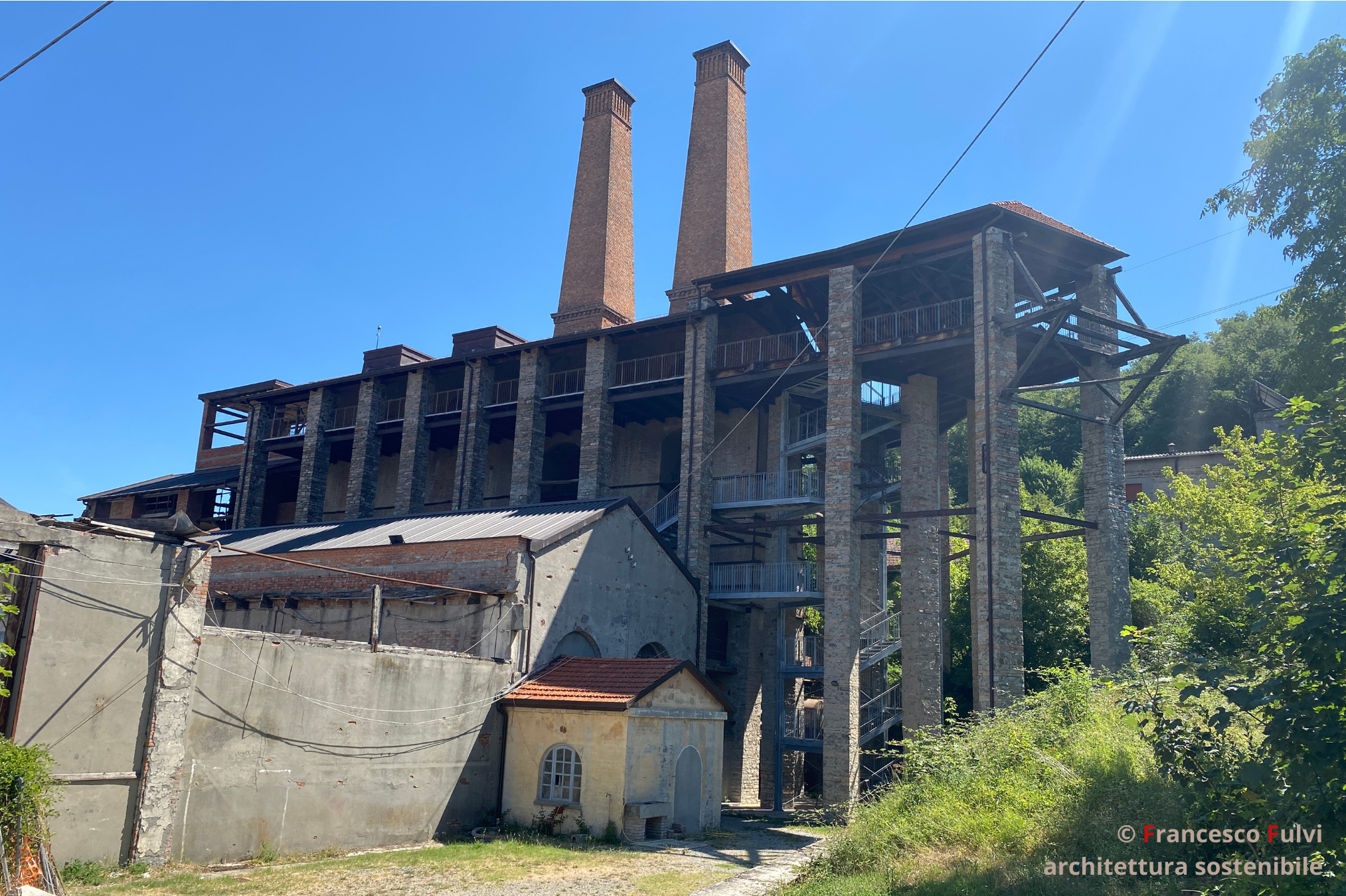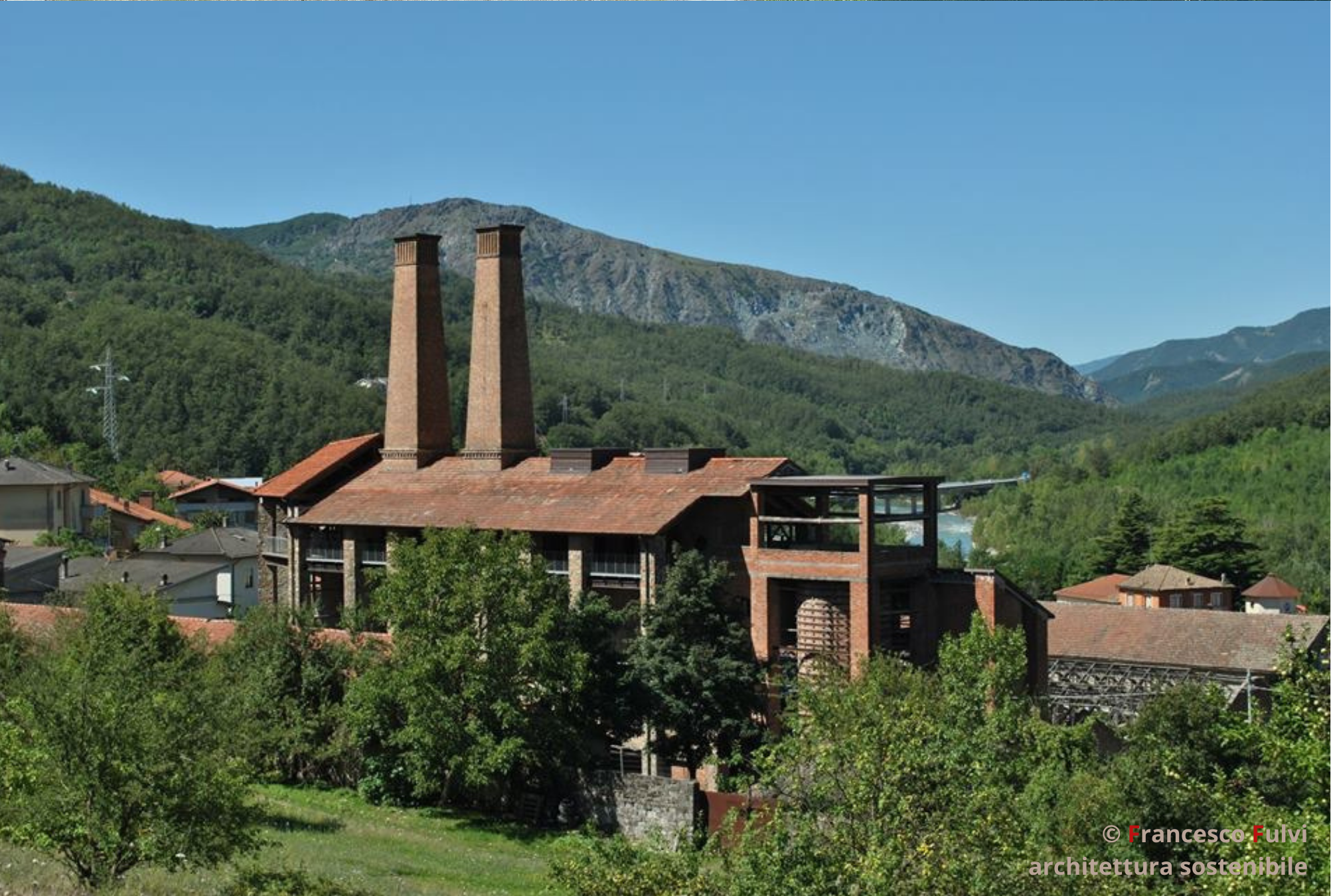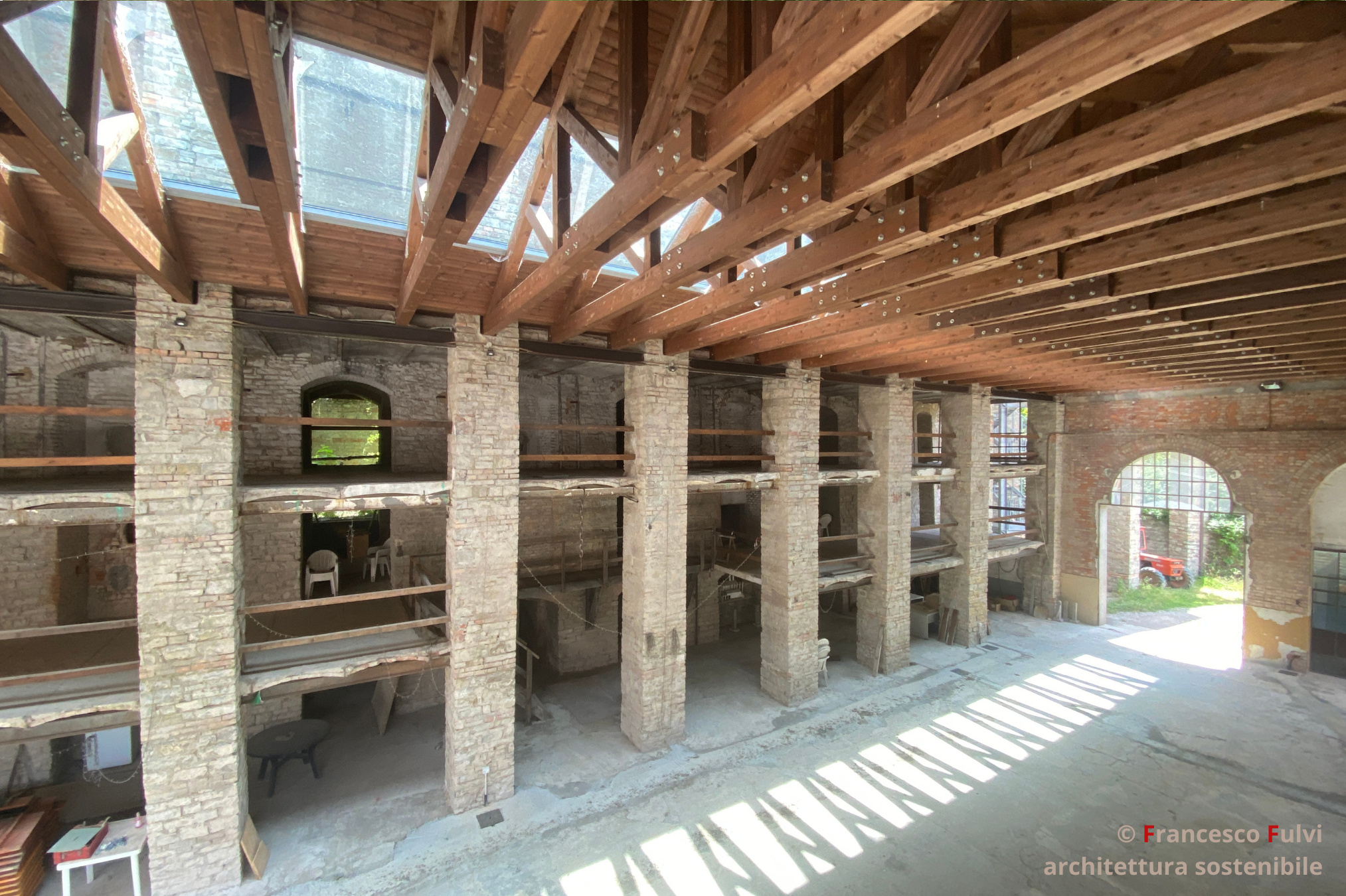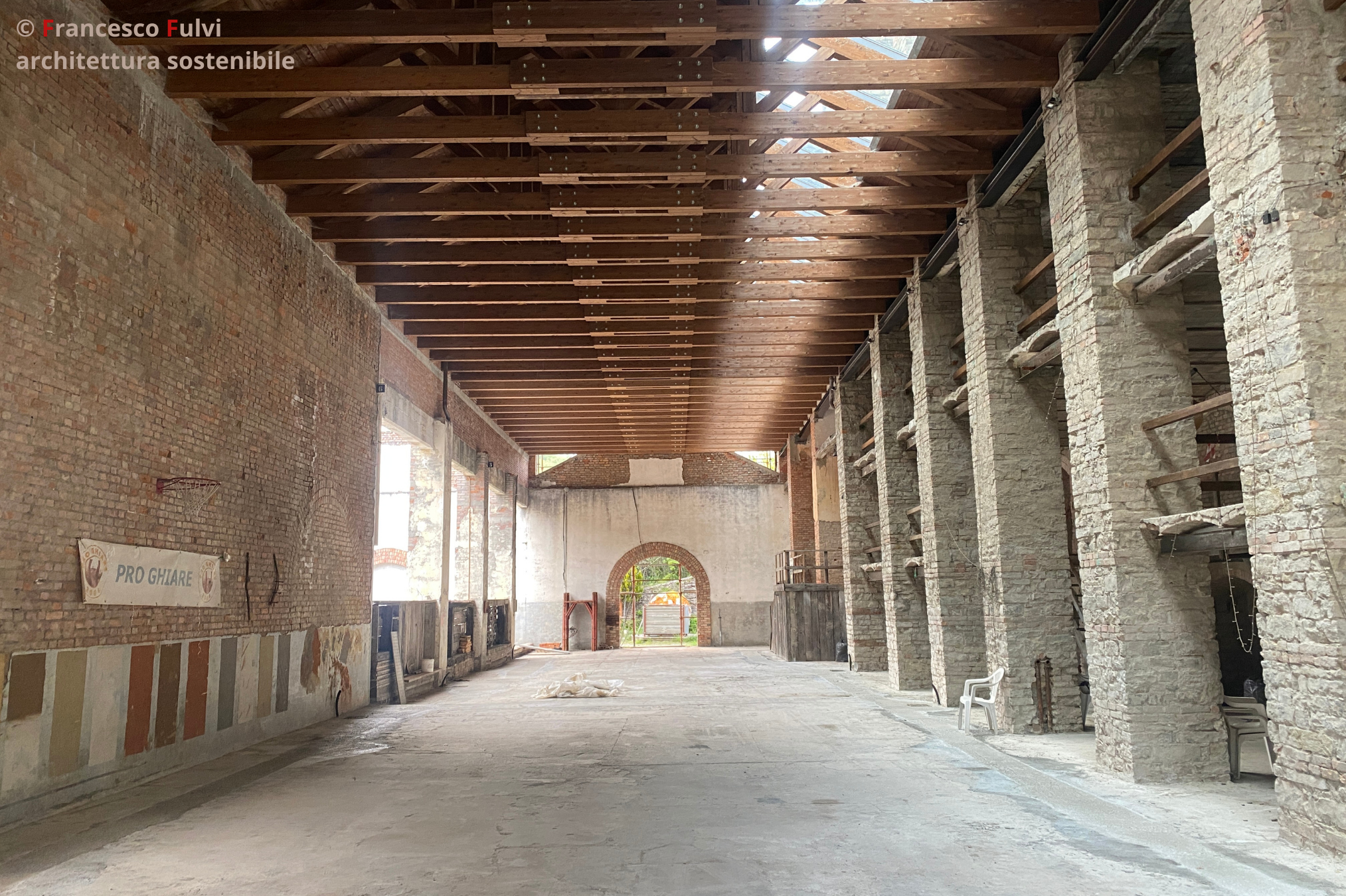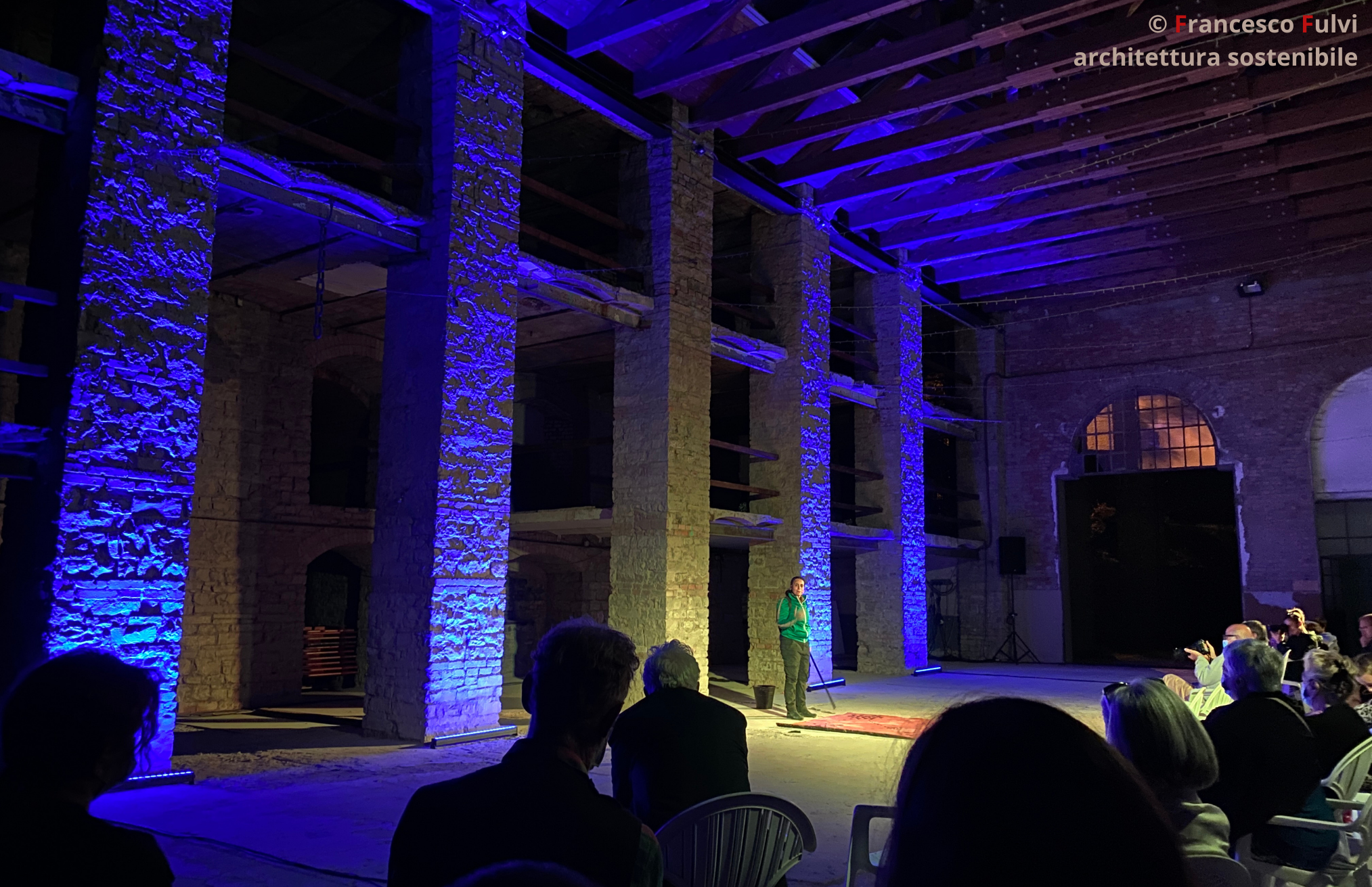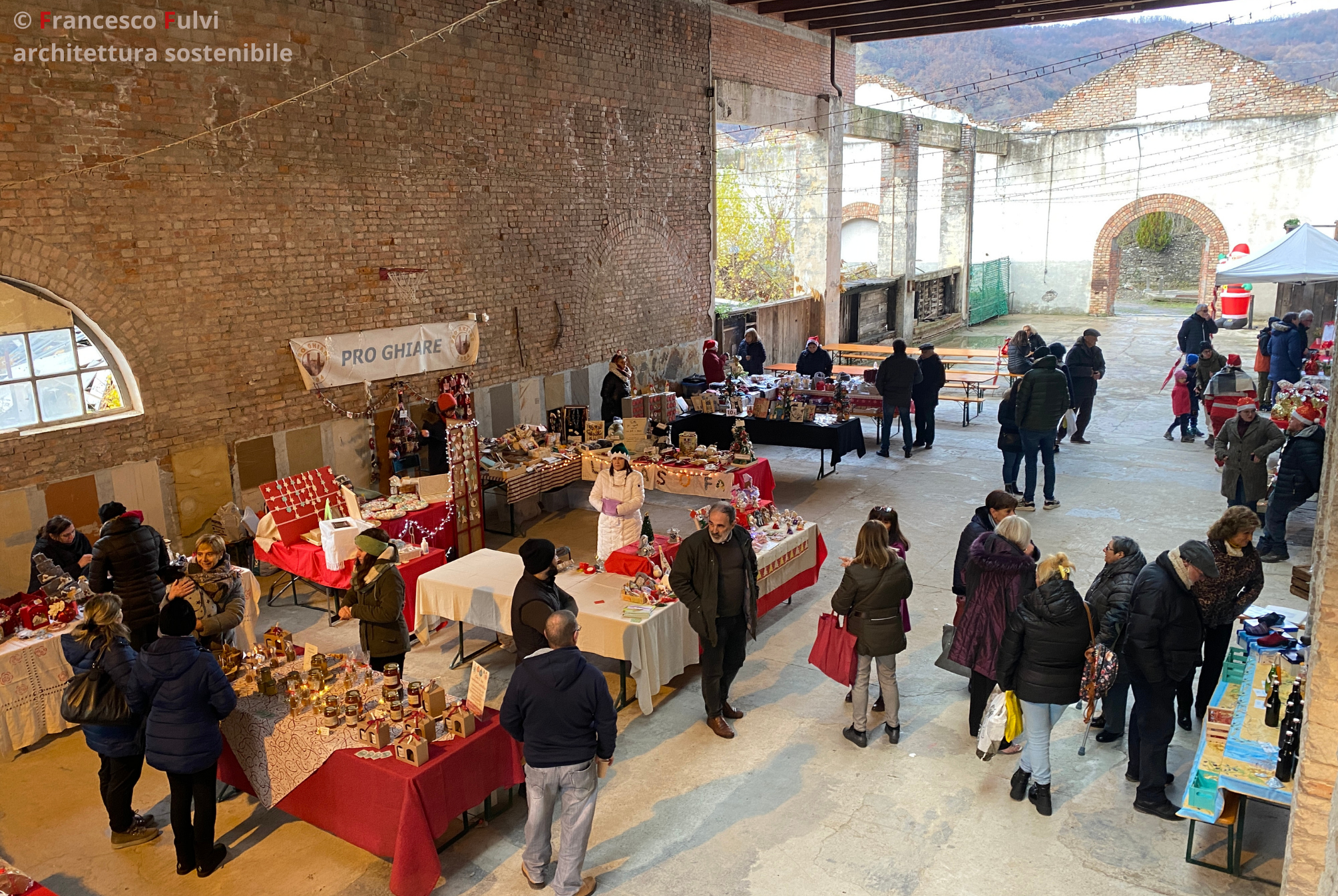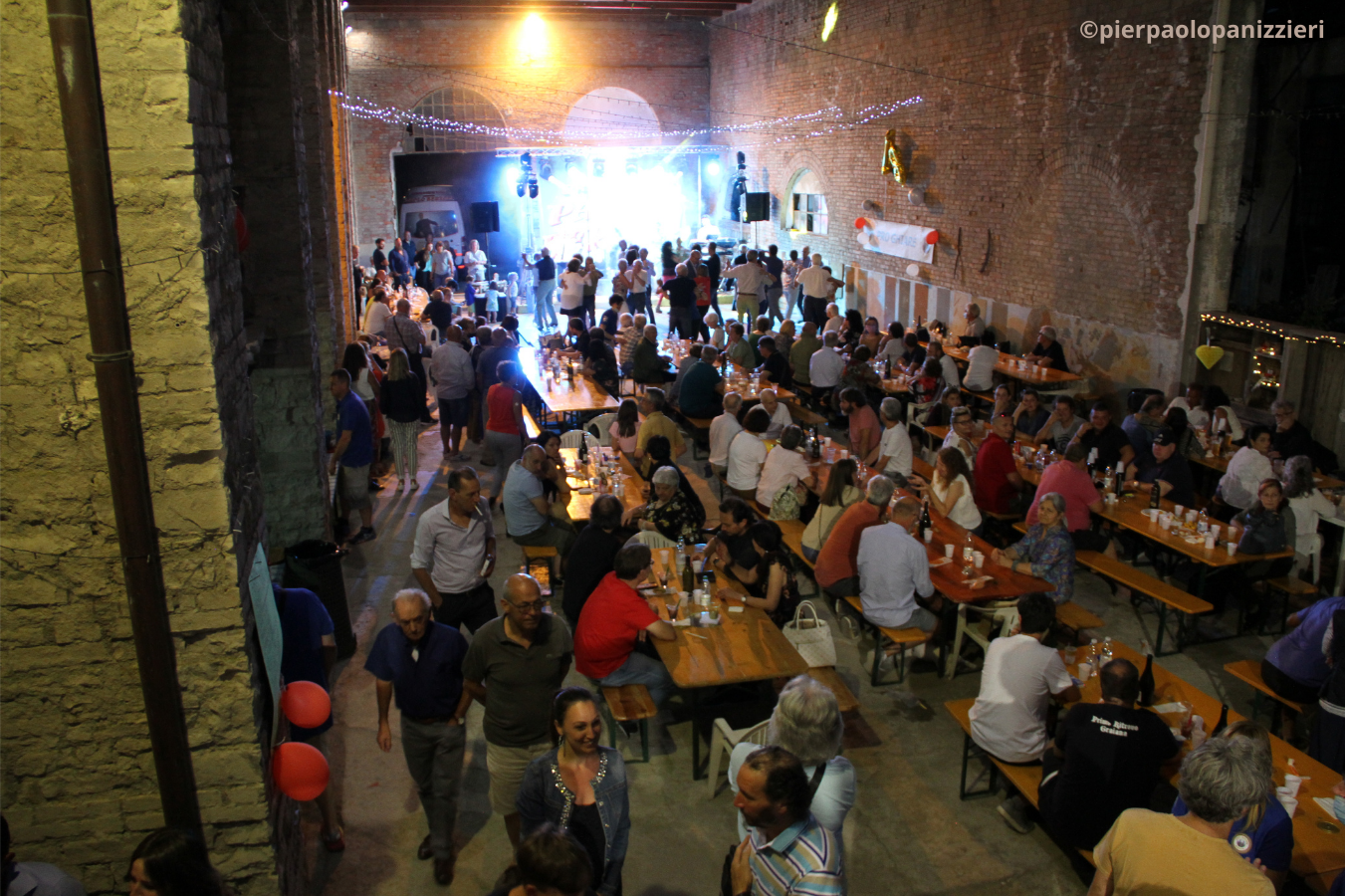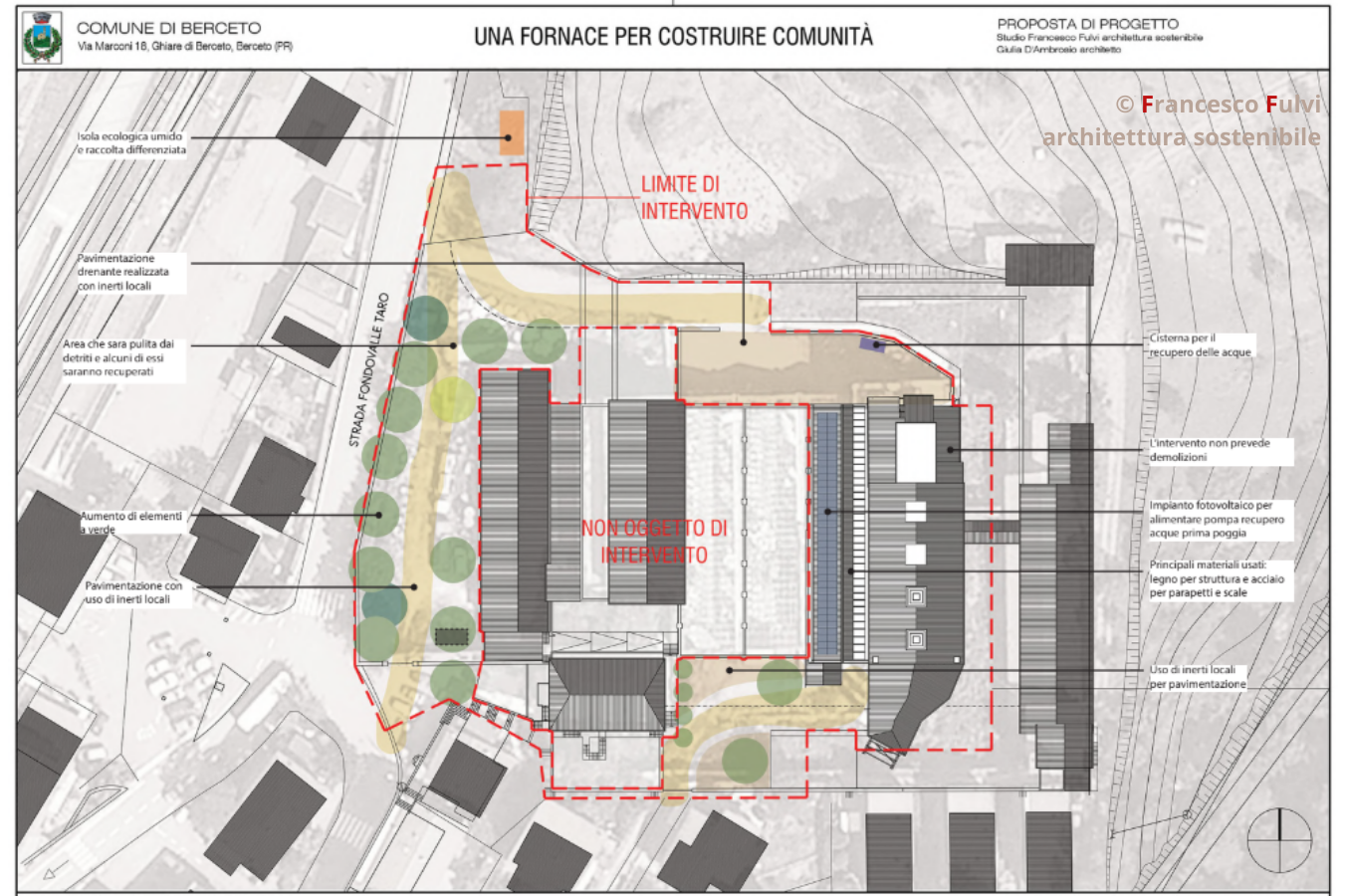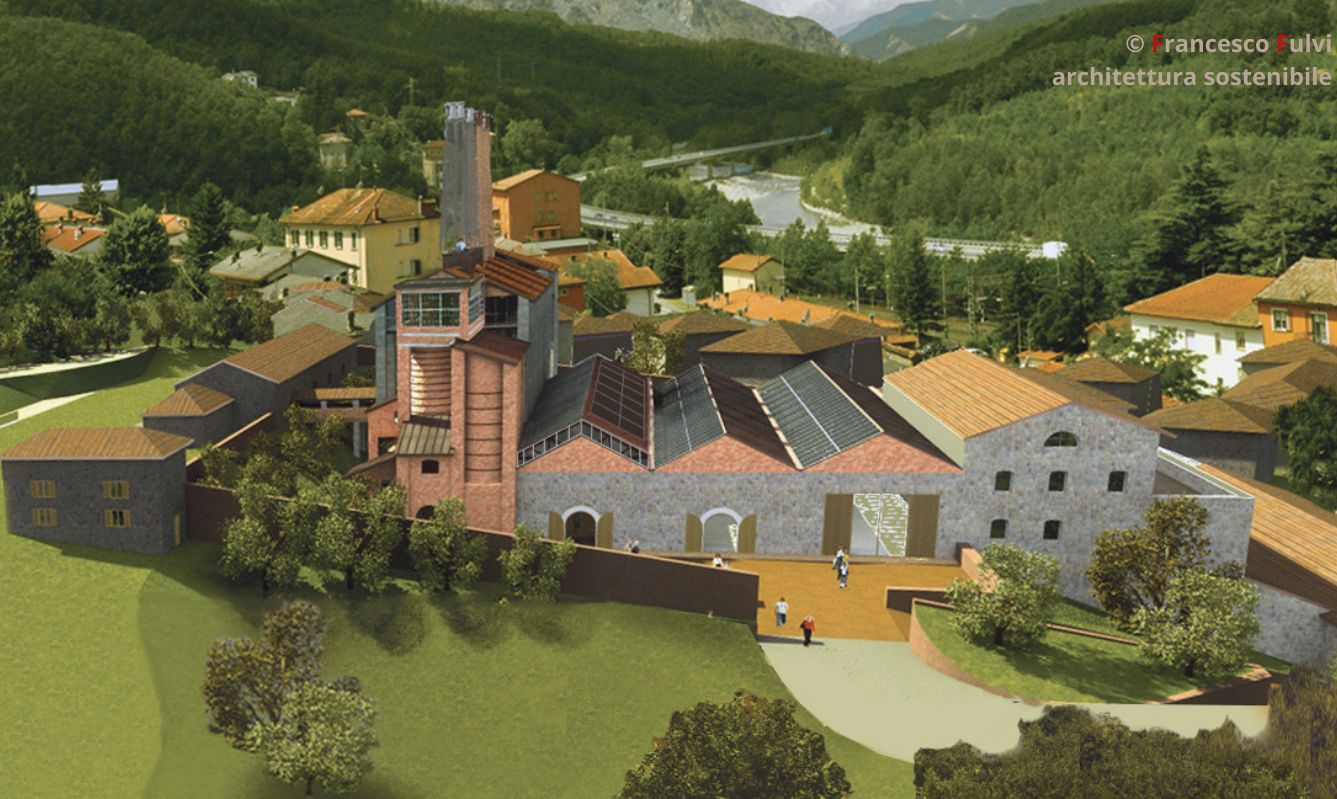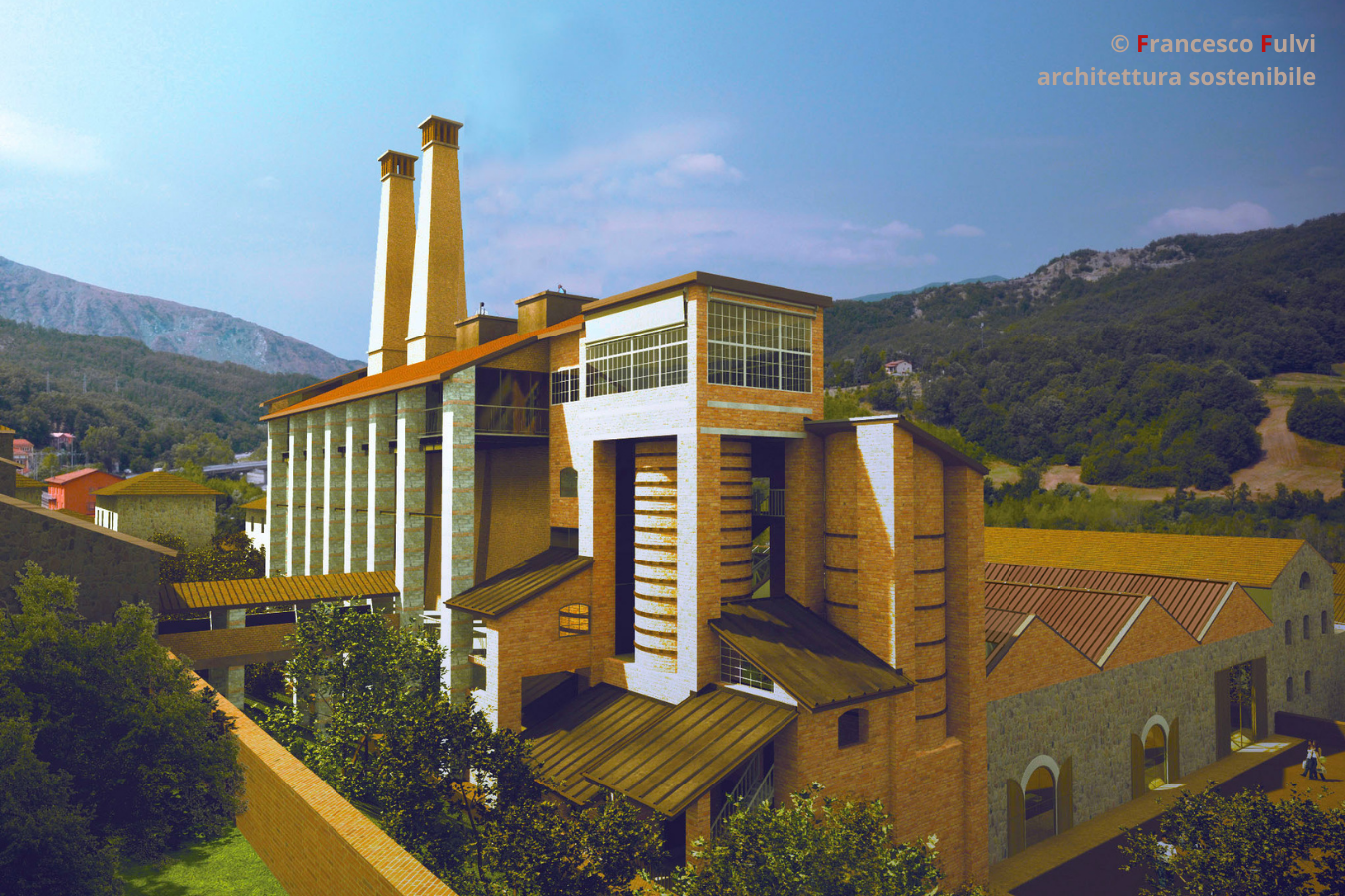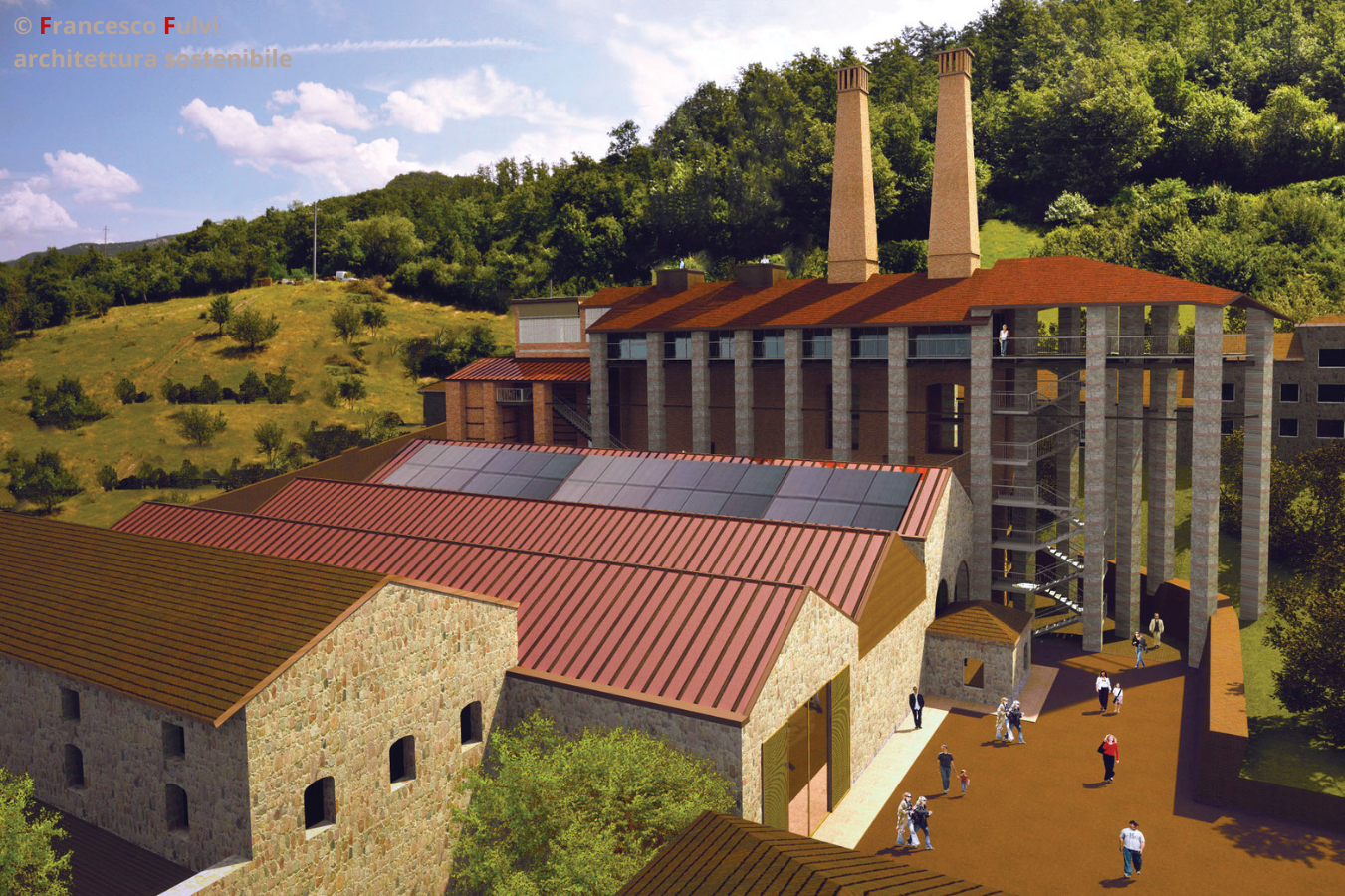An Old Kiln to Build Community
The regeneration of an industrial archaeological building through citizen participation
The “Old Kiln” is an example of industrial recovery, but also a place for a creative rebirth. Thanks to various regenerative interventions, this space is becoming a dynamic meeting point where urban civic spirit and social innovation thrive. Here, institutions, citizens, and third-sector organizations actively collaborate to experiment with new forms of shared management and community engagement, creating an ever-evolving ecosystem where culture, art, sociality, tourism, and economy intersect.
Italy
Ghiare di Berceto
Prototype level
Yes
Yes
Yes
Yes
ERDF : European Regional Development Fund
{Empty}
No
034004: Berceto (IT)
The regenerative initiative of the former "Marchino Cement Factory" is transforming it into a multifunctional center for cultural, social, and economic activities. The goal is to complete the building's recovery by integrating new uses that meet the needs of the local community and the entire Alta Val Taro area.
Target groups:
- Residents of the Municipality of Berceto and the Val Taro municipalities (Borgo Val di Taro, Solignano, Valmozzola);
- Cultural and social promotion associations;
- Small local agricultural producers and operators of the Alte Valli Biodistrict;
- Tourists and visitors, attracted by the strategic location of the Kiln (close to the railway station and highway).
Specific objectives:
- Redevelopment of a degraded and derelict area within an urban context;
- Restore a multifunctional space for cultural events, market activities, and social gatherings;
- Launch a weekly farmers' market called “Cibaria” offering local short-supply-chain products;
- Promote the creation of a Renewable Energy Community, supported by the installation of a photovoltaic system on the facility;
- Improve accessibility and safety with infrastructure enhancements (an intermodal parking area with electric charging stations) and the redevelopment of outdoor spaces;
- Engage citizens and stakeholders in a participatory process to define the future management of the space.
Expected results:
- A regenerated and fully accessible area near the railway station and highway, suitable for large events, community activities, and a market for local farmerst;
- New economic and employment opportunities through market activities;
- Strengthened social cohesion through participatory meetings and co-design with the local community;
- A sustainable development model, integrating renewable energy and circular economy practices;
- Territorial identity reinforcement, promoting tourism and local traditions.
Target groups:
- Residents of the Municipality of Berceto and the Val Taro municipalities (Borgo Val di Taro, Solignano, Valmozzola);
- Cultural and social promotion associations;
- Small local agricultural producers and operators of the Alte Valli Biodistrict;
- Tourists and visitors, attracted by the strategic location of the Kiln (close to the railway station and highway).
Specific objectives:
- Redevelopment of a degraded and derelict area within an urban context;
- Restore a multifunctional space for cultural events, market activities, and social gatherings;
- Launch a weekly farmers' market called “Cibaria” offering local short-supply-chain products;
- Promote the creation of a Renewable Energy Community, supported by the installation of a photovoltaic system on the facility;
- Improve accessibility and safety with infrastructure enhancements (an intermodal parking area with electric charging stations) and the redevelopment of outdoor spaces;
- Engage citizens and stakeholders in a participatory process to define the future management of the space.
Expected results:
- A regenerated and fully accessible area near the railway station and highway, suitable for large events, community activities, and a market for local farmerst;
- New economic and employment opportunities through market activities;
- Strengthened social cohesion through participatory meetings and co-design with the local community;
- A sustainable development model, integrating renewable energy and circular economy practices;
- Territorial identity reinforcement, promoting tourism and local traditions.
Social cohesion
Industrial archaeology
Public-private partnership
Renewable Energy Community
Enhancing local territory and products
Environmental sustainability objectives:
- Installation of a photovoltaic system on the Kiln roof, supporting the emerging Renewable Energy Community and reducing dependence on fossil fuels;
- Redevelopment of outdoor spaces using permeable materials and the creation of green areas, improving microclimate comfort and reducing soil consumption;
- Installation of electric vehicle charging stations, promoting sustainable mobility;
- Conservation-oriented restoration of a disused building, preventing further consumption of natural resources.
Social sustainability objectives:
- Creation of a shared space for cultural, educational, and social activities, improving the quality of life for the local community;
- Participatory processes involving citizens, associations, and businesses in defining the governance and use of the Kiln;
- Launch of a local farmers' market to strengthen the connection between producers and consumers, fostering a solidarity-based economy.
Economic sustainability objectives:
- Development of a local economy tied to the enhancement of agricultural products and experiential tourism;
- Restoration of the privately owned section of the former cement factory, encouraging the regeneration of the entire building;
- Structuring a sustainable management plan to ensure the project's long-term economic self-sufficiency.
The initiative represents an innovative example of urban and social regeneration, based on an integrated sustainability approach. The active involvement of the community, the use of renewable energy, the valorization of historical-industrial heritage, and the strengthening of local economies make this project a replicable model in other similar contexts. The Kiln is becoming a living laboratory of best practices, inspiring other initiatives to create regenerated and inclusive spaces.
- Installation of a photovoltaic system on the Kiln roof, supporting the emerging Renewable Energy Community and reducing dependence on fossil fuels;
- Redevelopment of outdoor spaces using permeable materials and the creation of green areas, improving microclimate comfort and reducing soil consumption;
- Installation of electric vehicle charging stations, promoting sustainable mobility;
- Conservation-oriented restoration of a disused building, preventing further consumption of natural resources.
Social sustainability objectives:
- Creation of a shared space for cultural, educational, and social activities, improving the quality of life for the local community;
- Participatory processes involving citizens, associations, and businesses in defining the governance and use of the Kiln;
- Launch of a local farmers' market to strengthen the connection between producers and consumers, fostering a solidarity-based economy.
Economic sustainability objectives:
- Development of a local economy tied to the enhancement of agricultural products and experiential tourism;
- Restoration of the privately owned section of the former cement factory, encouraging the regeneration of the entire building;
- Structuring a sustainable management plan to ensure the project's long-term economic self-sufficiency.
The initiative represents an innovative example of urban and social regeneration, based on an integrated sustainability approach. The active involvement of the community, the use of renewable energy, the valorization of historical-industrial heritage, and the strengthening of local economies make this project a replicable model in other similar contexts. The Kiln is becoming a living laboratory of best practices, inspiring other initiatives to create regenerated and inclusive spaces.
The former Cement Factory, with its imposing chimneys and brick structure, is a rare example of industrial archaeology with a strong aesthetic impact. Its redevelopment enhances its historical and architectural value, combining aesthetics with transformation into a space for culture, sociality, and collective identity through a series of goals that can be replicated in other contexts:
Enhacement of historical identity
The architectural restoration project preserved the original essence of the building, maintaining distinctive elements (volumes, load-bearing structures, industrial materials). The restoration works were carried out with a respectful approach, emphasizing the materiality of surfaces and the visual impact of the Kiln.
Quality of experience
The renovation of spaces has created an evocative welcoming, accessible, and multifunctional environment that can host not only a weekly market, but also cultural events, exhibitions, workshops, and meetings, transforming the Kiln into a dynamic and vibrant hub.
Cultural and social benefits
Collaboration with local associations specialized in event organization will ensure a high-quality cultural program, making the Kiln a cultural landmark not only for the local community and for the entire province, but it’s also a place for cultural creation: for several years, it has hosted summer workshops on restoration techniques in collaboration with the Department of Engineering And Architecture of the University of Parma
The initiative stands out for its balance between historical preservation and innovation, transforming an abandoned building into a social and artistic experience. The combination of original architectural elements, sensitive design interventions, and a cool cultural program makes the Kiln a virtuous example of urban regeneration based on beauty, quality of experience, and social value.
Enhacement of historical identity
The architectural restoration project preserved the original essence of the building, maintaining distinctive elements (volumes, load-bearing structures, industrial materials). The restoration works were carried out with a respectful approach, emphasizing the materiality of surfaces and the visual impact of the Kiln.
Quality of experience
The renovation of spaces has created an evocative welcoming, accessible, and multifunctional environment that can host not only a weekly market, but also cultural events, exhibitions, workshops, and meetings, transforming the Kiln into a dynamic and vibrant hub.
Cultural and social benefits
Collaboration with local associations specialized in event organization will ensure a high-quality cultural program, making the Kiln a cultural landmark not only for the local community and for the entire province, but it’s also a place for cultural creation: for several years, it has hosted summer workshops on restoration techniques in collaboration with the Department of Engineering And Architecture of the University of Parma
The initiative stands out for its balance between historical preservation and innovation, transforming an abandoned building into a social and artistic experience. The combination of original architectural elements, sensitive design interventions, and a cool cultural program makes the Kiln a virtuous example of urban regeneration based on beauty, quality of experience, and social value.
The initiative is a virtuous example of inclusive regeneration, addressing accessibility needs by eliminating architectural barriers and equipping the space with accessible restrooms for people with disabilities.
Economic accessibility will be ensured by keeping space rental costs affordable, allowing local associations to use the facility at a low cost. Additionally, the “Cibaria” project will create economic opportunities for local producers, promoting short supply chains and fair pricing for both consumers and vendors. The emerging Renewable Energy Community will also reduce energy costs, providing a tangible economic benefit.
The governance of the Kiln will be defined through continued co-design and co-programming processes that are already (and will) actively involve citizens, associations, and local businesses. This approach will allow the Municipal Administration to listen to the needs of the entire community, with special attention to vulnerable groups.
For these reasons, the Kiln is and will increasingly become a place of social aggregation, promoting intercultural events and educational activities for the youth, the elderly, and people from diverse backgrounds, positioning itself as an exemplary model of inclusion and participation.
At the moment, we have engaged 4 subjects (2 associations, 1 consortium of private individuals and 1 community cooperative) who have committed themselves to work together to make the building usable with events open to the population. The process of involving other subjects will make it possible to identify a joint management model once the entire space has been made available.
Economic accessibility will be ensured by keeping space rental costs affordable, allowing local associations to use the facility at a low cost. Additionally, the “Cibaria” project will create economic opportunities for local producers, promoting short supply chains and fair pricing for both consumers and vendors. The emerging Renewable Energy Community will also reduce energy costs, providing a tangible economic benefit.
The governance of the Kiln will be defined through continued co-design and co-programming processes that are already (and will) actively involve citizens, associations, and local businesses. This approach will allow the Municipal Administration to listen to the needs of the entire community, with special attention to vulnerable groups.
For these reasons, the Kiln is and will increasingly become a place of social aggregation, promoting intercultural events and educational activities for the youth, the elderly, and people from diverse backgrounds, positioning itself as an exemplary model of inclusion and participation.
At the moment, we have engaged 4 subjects (2 associations, 1 consortium of private individuals and 1 community cooperative) who have committed themselves to work together to make the building usable with events open to the population. The process of involving other subjects will make it possible to identify a joint management model once the entire space has been made available.
The urban regeneration of the Ex Kiln stands as an exemplary model of active participation, as the architectural restoration is taking place alongside an inclusive and collaborative participatory process, in which the community plays a leading role in transforming the space.
The project has been shaped through an active engagement process involving the local population, including public meetings, surveys, and working groups with associations and citizens.
Since 2022, co-programming initiatives have been carried out in collaboration with local institutions and associations such as Proloco Ghiare 2004, the Cooperativa di Comunità Ghiare Futura, the Associazione Superfamiglia, and the Biodistrict of Alte Valli. These entities will serve as the foundation for event planning and the future management of the spaces. The establishment of a co-management committee will ensure that decisions regarding the Kiln are made inclusively and respond to the real needs of the community.
Citizen participation will foster a stronger sense of belonging and care for the space, ensuring a dynamic and sustainable management over time and preventing the risk of abandonment. The Kiln will thus become a multifunctional center open to all, hosting cultural events, workshops, meetings, and social activities aimed at enhancing the quality of life for the residents of Ghiare and the entire municipality by providing services and opportunities that are currently lacking.
The weekly "Cibaria" market will support local commerce, giving citizens access to short-supply-chain goods and offering agricultural producers a space to sell their products. This initiative will create new job opportunities, encourage tourism, and stimulate the local economy.
The project has been shaped through an active engagement process involving the local population, including public meetings, surveys, and working groups with associations and citizens.
Since 2022, co-programming initiatives have been carried out in collaboration with local institutions and associations such as Proloco Ghiare 2004, the Cooperativa di Comunità Ghiare Futura, the Associazione Superfamiglia, and the Biodistrict of Alte Valli. These entities will serve as the foundation for event planning and the future management of the spaces. The establishment of a co-management committee will ensure that decisions regarding the Kiln are made inclusively and respond to the real needs of the community.
Citizen participation will foster a stronger sense of belonging and care for the space, ensuring a dynamic and sustainable management over time and preventing the risk of abandonment. The Kiln will thus become a multifunctional center open to all, hosting cultural events, workshops, meetings, and social activities aimed at enhancing the quality of life for the residents of Ghiare and the entire municipality by providing services and opportunities that are currently lacking.
The weekly "Cibaria" market will support local commerce, giving citizens access to short-supply-chain goods and offering agricultural producers a space to sell their products. This initiative will create new job opportunities, encourage tourism, and stimulate the local economy.
The redevelopment of the Ex Cement Factory is the result of an ongoing regeneration process that has involved — and will continue to involve — stakeholders at local, regional, national, and European levels:
1 - Local Level
● Municipality of Berceto: Owner of part of the complex and project promoter, it has funded some of the renovation work, coordinated recovery activities, and activated participatory processes to define the building’s future uses and activities;
● Province of Parma and other local institutions: Contributed to the initial rehabilitation work;
● Fondazione Cariparma: Funded co-programming and co-design processes to define the Kiln’s future management, as well as parts of the restoration;
● Local associations: Helped identify potential functions and uses for the Kiln, proposing cultural, social, and economic activities;
● Local farmers: Key partners in launching the “Cibaria” market;
● Citizens: Engaged through public meetings, co-design workshops, and surveys to collect needs and proposals.
2 - Regional Level
● Emilia-Romagna Region: Provided funding for the creation of direct-sale farmers' markets (“Cibaria”) and supported participatory processes through the 2024 “Bando Partecipazione”.
3 - European Level
● European Commission: Funded several interventions for safety measures and temporary site use through regionally managed EU funds (POR FESR);
● EUCF (European City Facility) Program: Supported the Berceto Energy Park project, identifying the Kiln as an ideal site for sustainability and renewable energy initiatives, specifically identifying a first public photovoltaic plant to be put to and serve a nascent Renewable Energy Community.
1 - Local Level
● Municipality of Berceto: Owner of part of the complex and project promoter, it has funded some of the renovation work, coordinated recovery activities, and activated participatory processes to define the building’s future uses and activities;
● Province of Parma and other local institutions: Contributed to the initial rehabilitation work;
● Fondazione Cariparma: Funded co-programming and co-design processes to define the Kiln’s future management, as well as parts of the restoration;
● Local associations: Helped identify potential functions and uses for the Kiln, proposing cultural, social, and economic activities;
● Local farmers: Key partners in launching the “Cibaria” market;
● Citizens: Engaged through public meetings, co-design workshops, and surveys to collect needs and proposals.
2 - Regional Level
● Emilia-Romagna Region: Provided funding for the creation of direct-sale farmers' markets (“Cibaria”) and supported participatory processes through the 2024 “Bando Partecipazione”.
3 - European Level
● European Commission: Funded several interventions for safety measures and temporary site use through regionally managed EU funds (POR FESR);
● EUCF (European City Facility) Program: Supported the Berceto Energy Park project, identifying the Kiln as an ideal site for sustainability and renewable energy initiatives, specifically identifying a first public photovoltaic plant to be put to and serve a nascent Renewable Energy Community.
The regeneration project has integrated multiple disciplines and sectors to ensure a multidimensional approach to space recovery, including:
● Architecture and urban planning: Preserving architectural heritage and redeveloping spaces to integrate the building into the urban fabric, improving accessibility;
● Socio-economic analysis: Understanding community needs and defining participatory governance models, while also assessing economic opportunities linked to the “Cibaria” market;
● Energy and environmental sustainability: Implementing a Renewable Energy Community, installing photovoltaic systems, promoting sustainable mobility (electric charging stations), and using permeable materials to reduce land consumption;
● Culture and tourism: Transforming the redeveloped space into a cultural hub, hosting events, exhibitions, and activities to attract tourists and visitors.
● University: an interesting experience, led by some teachers and architecture students, was the organization of summer camps to help restore the Kiln, using natural materials and traditional building techniques. These summer camps, repeated for several years, helped to keep people's attention on this building and make it known to a wider audience than just the local one.
A continuous dialogue between experts, public administration, and the community has ensured innovative solutions, making the Kiln not only an architectural restoration project, but also a driver of social and environmental innovation - a model that can be replicated elsewhere.
● Architecture and urban planning: Preserving architectural heritage and redeveloping spaces to integrate the building into the urban fabric, improving accessibility;
● Socio-economic analysis: Understanding community needs and defining participatory governance models, while also assessing economic opportunities linked to the “Cibaria” market;
● Energy and environmental sustainability: Implementing a Renewable Energy Community, installing photovoltaic systems, promoting sustainable mobility (electric charging stations), and using permeable materials to reduce land consumption;
● Culture and tourism: Transforming the redeveloped space into a cultural hub, hosting events, exhibitions, and activities to attract tourists and visitors.
● University: an interesting experience, led by some teachers and architecture students, was the organization of summer camps to help restore the Kiln, using natural materials and traditional building techniques. These summer camps, repeated for several years, helped to keep people's attention on this building and make it known to a wider audience than just the local one.
A continuous dialogue between experts, public administration, and the community has ensured innovative solutions, making the Kiln not only an architectural restoration project, but also a driver of social and environmental innovation - a model that can be replicated elsewhere.
The project stands out for two key innovations:
1. Its approach to restoration and conservation:
○ The initiative preserves the historical and architectural identity of a highly significant industrial building, maintaining its original chimneys and brick structure while integrating modern functions.
2. Its interdisciplinary and participatory approach:
○ A strong synergy between different stakeholders and disciplines has enabled the co-design of inclusive and accessible spaces, ensuring that decisions reflect the real needs of the community.
Additionally, the project incorporates cutting-edge sustainability solutions, such as:
● The installation of a photovoltaic system to support the Renewable Energy Community;
● The creation of an economically and socially sustainable local market (“Cibaria”);
● Participatory governance models to ensure the long-term sustainability of the Kiln.
By combining tradition and innovation, the initiative sets a new standard for industrial heritage reuse, demonstrating how historical buildings can be transformed into multifunctional, sustainable community spaces.
1. Its approach to restoration and conservation:
○ The initiative preserves the historical and architectural identity of a highly significant industrial building, maintaining its original chimneys and brick structure while integrating modern functions.
2. Its interdisciplinary and participatory approach:
○ A strong synergy between different stakeholders and disciplines has enabled the co-design of inclusive and accessible spaces, ensuring that decisions reflect the real needs of the community.
Additionally, the project incorporates cutting-edge sustainability solutions, such as:
● The installation of a photovoltaic system to support the Renewable Energy Community;
● The creation of an economically and socially sustainable local market (“Cibaria”);
● Participatory governance models to ensure the long-term sustainability of the Kiln.
By combining tradition and innovation, the initiative sets a new standard for industrial heritage reuse, demonstrating how historical buildings can be transformed into multifunctional, sustainable community spaces.
The methodological approach of the initiative is based on participation, interdisciplinarity, and sustainability, aiming to enhance the social, cultural, and economic fabric of the territory.
The process unfolded through the following key phases:
1. Context Analysis
○ A comprehensive historical, urban, and socio-economic assessment was conducted to understand community needs and potential uses for the space.
2. Participatory Planning
○ The Municipality engaged citizens, stakeholders, and experts through workshops, public meetings, and co-design sessions;
○ These interactions shaped the project's vision and governance model, ensuring that community needs were at the core of decision-making.
3. Sustainable Restoration and Redevelopment
○ Interventions were designed to improve accessibility, functionality, and safety, while adopting green solutions such as energy-efficient systems and sustainable materials.
By combining inclusive governance, cultural preservation, and economic development, the initiative not only revitalizes an abandoned site but also establishes a replicable model of community-led regeneration.
The process unfolded through the following key phases:
1. Context Analysis
○ A comprehensive historical, urban, and socio-economic assessment was conducted to understand community needs and potential uses for the space.
2. Participatory Planning
○ The Municipality engaged citizens, stakeholders, and experts through workshops, public meetings, and co-design sessions;
○ These interactions shaped the project's vision and governance model, ensuring that community needs were at the core of decision-making.
3. Sustainable Restoration and Redevelopment
○ Interventions were designed to improve accessibility, functionality, and safety, while adopting green solutions such as energy-efficient systems and sustainable materials.
By combining inclusive governance, cultural preservation, and economic development, the initiative not only revitalizes an abandoned site but also establishes a replicable model of community-led regeneration.
The most replicable aspect of the initiative is its integrated approach, which:
● Actively engages citizens, associations, and stakeholders in decision-making and site management, fostering a strong sense of ownership;
● Combines heritage preservation with renewable energy solutions, as seen in the photovoltaic system and Renewable Energy Community;
● Establishes an economically viable initiative, such as the “Cibaria” farmers' market, which aims at supporting local producers and sustainable supply chains.
These principles can easily be adapted to other post-industrial sites, rural communities, or urban areas seeking sustainable redevelopment solutions.
● Actively engages citizens, associations, and stakeholders in decision-making and site management, fostering a strong sense of ownership;
● Combines heritage preservation with renewable energy solutions, as seen in the photovoltaic system and Renewable Energy Community;
● Establishes an economically viable initiative, such as the “Cibaria” farmers' market, which aims at supporting local producers and sustainable supply chains.
These principles can easily be adapted to other post-industrial sites, rural communities, or urban areas seeking sustainable redevelopment solutions.
1. Climate Change
○ The project promotes renewable energy through the creation of a Renewable Energy Community, the installation of a photovoltaic system, and electric vehicle charging stations.
○ These solutions reduce the carbon footprint and support the energy transition at local level.
2. Local Economic Development & Short Supply Chains
○ The “Cibaria” market encourages short supply chains, reducing economic disparities and creating a more resilient, community-driven economy.
3. Social Cohesion & Inclusion
○ The initiative combats social fragmentation by offering inclusive community spaces.
○ Co-design processes and participatory governance ensure that local voices shape the future of the Kiln, strengthening community bonds and enhancing the site’s social function.
○ The project promotes renewable energy through the creation of a Renewable Energy Community, the installation of a photovoltaic system, and electric vehicle charging stations.
○ These solutions reduce the carbon footprint and support the energy transition at local level.
2. Local Economic Development & Short Supply Chains
○ The “Cibaria” market encourages short supply chains, reducing economic disparities and creating a more resilient, community-driven economy.
3. Social Cohesion & Inclusion
○ The initiative combats social fragmentation by offering inclusive community spaces.
○ Co-design processes and participatory governance ensure that local voices shape the future of the Kiln, strengthening community bonds and enhancing the site’s social function.
The initiative includes several activities for its further development and implementation, strongly aligned with the values and principles of the New European Bauhaus (NEB), integrating sustainability, inclusion, innovation, and beauty. The next phases of implementation will focus on:
1. Completion of physical and infrastructural interventions
○ These works will ensure energy efficiency and safety while enhancing the architectural heritage, respecting the historical identity of the building and creating aesthetic and functional spaces in line with NEB principles.
2. Continuation of co-design and participatory activities
○ The community and stakeholders will continue to be actively involved through workshops, public meetings, and participatory design sessions to define space usage.
○ This inclusive approach promotes collective design and social innovation, as outlined by the NEB.
3. Development of cultural, social, and economic activities
○ The Kiln will evolve into a hub for community engagement and creativity, transforming an industrial heritage site into a vibrant center of public life.
○ This is fully in line with the NEB’s mission to create meaningful, beautiful spaces that foster social connections.
4. Implementation of sustainable and technological solutions
○ Renewable energy systems, such as the photovoltaic installation and electric charging stations, will reduce the site’s ecological impact.
○ These efforts will promote an eco-innovative and responsible development model, addressing global sustainability challenges in alignment with the NEB’s vision.
1. Completion of physical and infrastructural interventions
○ These works will ensure energy efficiency and safety while enhancing the architectural heritage, respecting the historical identity of the building and creating aesthetic and functional spaces in line with NEB principles.
2. Continuation of co-design and participatory activities
○ The community and stakeholders will continue to be actively involved through workshops, public meetings, and participatory design sessions to define space usage.
○ This inclusive approach promotes collective design and social innovation, as outlined by the NEB.
3. Development of cultural, social, and economic activities
○ The Kiln will evolve into a hub for community engagement and creativity, transforming an industrial heritage site into a vibrant center of public life.
○ This is fully in line with the NEB’s mission to create meaningful, beautiful spaces that foster social connections.
4. Implementation of sustainable and technological solutions
○ Renewable energy systems, such as the photovoltaic installation and electric charging stations, will reduce the site’s ecological impact.
○ These efforts will promote an eco-innovative and responsible development model, addressing global sustainability challenges in alignment with the NEB’s vision.

